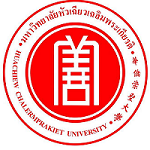Please use this identifier to cite or link to this item:
https://has.hcu.ac.th/jspui/handle/123456789/3977Full metadata record
| DC Field | Value | Language |
|---|---|---|
| dc.contributor.author | Panop Wilainam | - |
| dc.contributor.author | Rungrat Nintasen | - |
| dc.contributor.author | Parnpen Viriyavejakul | - |
| dc.contributor.author | ภานพ วิไลนาม | - |
| dc.contributor.author | รุ่งรัตน์ นิลธเสน | - |
| dc.contributor.author | พรรณเพ็ญ วิริยเวชกุล | - |
| dc.contributor.other | Mahidol University. Faculty of Veterinary Science | en |
| dc.contributor.other | Huachiew Chalermprakiet University. Faculty of Science and Technology | en |
| dc.contributor.other | Mahidol University. Faculty of Tropical Medicine | en |
| dc.date.accessioned | 2025-06-14T12:50:55Z | - |
| dc.date.available | 2025-06-14T12:50:55Z | - |
| dc.date.issued | 2015 | - |
| dc.identifier.citation | Malar J. 2015 Feb 7:14:67. | en |
| dc.identifier.other | doi: 10.1186/s12936-015-0568-8. | - |
| dc.identifier.uri | https://has.hcu.ac.th/jspui/handle/123456789/3977 | - |
| dc.description | สามารถเข้าถึงบทความฉบับเต็ม (Full Text) ได้ที่: https://pubmed.ncbi.nlm.nih.gov/25879828/ | en |
| dc.description.abstract | Background: Mast cells (MCs) play an important role in the immune response and inflammatory processes. Generally, MCs can be stimulated to degranulate and release histamine upon binding to immunoglobulin E (IgE). In malaria, MCs have been linked to immunoglobulin (Ig) E-anti-malarial antibodies. This study investigated the response of MCs in the skin of patients with Plasmodium falciparum malaria. Methods: Skin tissue samples were examined from ten uncomplicated and 20 complicated P. falciparum malaria cases. Normal skin tissues from 29 cases served as controls. Pre- and post-treatment tissues were included. Histopathological changes of the skin were evaluated using haematoxylin and eosin stain. MCs were investigated using toluidine blue staining. The percentage of MC degranulation was compared among groups and correlated with clinical data. Results: MC degranulation was significantly higher in the complicated P. falciparum (43.72% ± 1.44) group than the uncomplicated P. falciparum (31.35% ± 3.29) (p <0.05) and control groups (18.38% ± 1.75), (p <0.0001). MC degranulation correlated significantly with the degree of parasitaemia (rs = 0.66, p <0.0001). Associated pathological features, including extravasation of red blood cells, perivascular oedema and leukocyte infiltration were significantly increased in the malaria groups compared with the control group (all p <0.001). Conclusions: MCs in the skin dermis are activated during malaria infection, and the degree of MC degranulation correlates with parasitaemia and disease severity. | en |
| dc.language.iso | en_US | en |
| dc.subject | Plasmodium falciparum | en |
| dc.subject | พลาสโมเดียมฟัลซิปารัม | en |
| dc.subject | Mast cells | en |
| dc.subject | มาสทเซลล์ | en |
| dc.subject | Immune System | en |
| dc.subject | ระบบภูมิคุ้มกัน | en |
| dc.subject | Skin | en |
| dc.subject | ผิวหนัง | en |
| dc.subject | Dermis | en |
| dc.subject | ชั้นหนังแท้ | en |
| dc.title | Mast cell activation in the skin of Plasmodium falciparum malaria patients | en |
| dc.type | Article | en |
| Appears in Collections: | Science and Technology - Articles Journals | |
Files in This Item:
| File | Description | Size | Format | |
|---|---|---|---|---|
| Mast-cell-activation-in-the-skin-of-Plasmodium-falciparum-malaria-patients.pdf | 57.9 kB | Adobe PDF | View/Open |
Items in DSpace are protected by copyright, with all rights reserved, unless otherwise indicated.
